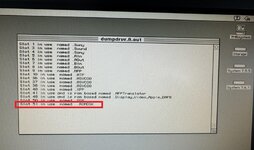Yes sure enough, did a quick test and moved the NETBOOT resource to offset 04 0F 10 (plenty of free space there). Had to adjust the NETBOOT resource header, and also adjust the next resource offset in the ATBOOT resource header. But this did the trick. NETBOOT driver, even though generally unused, is still an available resource going this route.There is a lot of free space in the C610 ROM
I'll update the C610 ROM HACKS document I attached earlier with this change; and also with the clean-up of the old NETBOOT resource area to set that all to 00 to clean it up.
Last edited:


